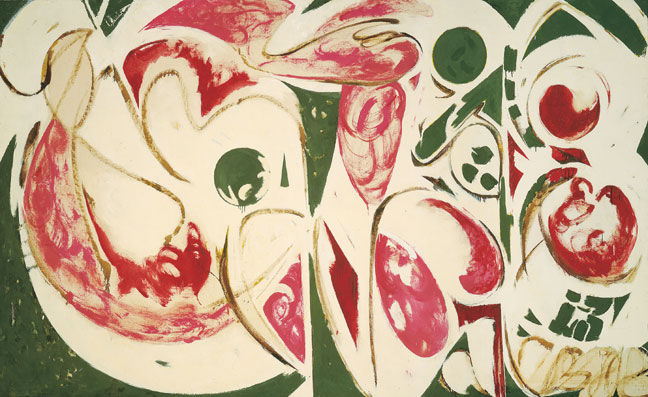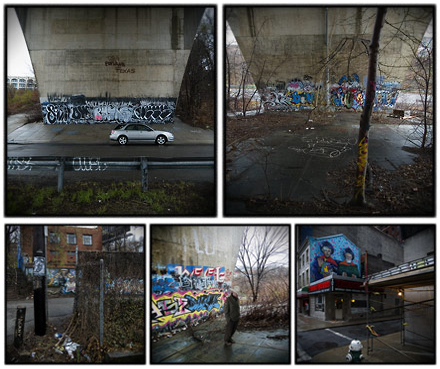Posted by Karl Zipser on April 30th, 2007

Painting
From Life vs.
From Photos
To be an artist today is to confront continual uncertainty. There is economic uncertainty, and also uncertainty of purpose. Modern society
seems to value art — art is preserved in museums, and purchased for large sums by “collectors.” And yet the typical artist is strangely disconnected from the top levels of success. Compare this with other professions. A competent pilot, trained at a good flight school, is more or less assured of a successful career. He or she might not get the opportunity to fly the biggest and newest commercial planes, or fancy jet fighters; but a stable career is a reasonable expectation, certainly compared to what an artist can hope for.
The profession of art has not always been so uncertain. For example, Cennino Cennini discusses the motivations of those entering the profession in his time (the 14th c.) “There are those who pursue it” he writes, “because of poverty and domestic need.” In 17th c. Holland, parents would encourage a talented son to pursue art as a profitable and respectable occupation. But nowadays, “poverty and domestic need” would better describe the results of becoming an artist, rather than causes for becoming one.
There is far more wealth in the world today to purchase art than in any time past. The difficult position of artist today is therefore something of a mystery.
If there is a general appreciation of art, and money to buy art, then why is it so difficult to fulfill the role of artist?
Posted by Richard Rothstein on April 29th, 2007

Are the Empire State Building and the Golden Gate Bridge queer?
In response to my “tribute” to the Empire State Building, Karl asked a simple question that caused me to do an extraordinary amount of thinking. This post is the answer and it’s hardly a simple one.
I was gushing over my life-long fascination and love affair with the Empire State Building and its powerful iconic nature. Karl asked: “How much of your attraction to the building has to do with the architectural style itself? At first I couldn’t’ see how to separate the two but after a while it dawned on me that there was much more to the question than was immediately apparent.
more… »
Posted by Rex Crockett on April 28th, 2007

Red Fir and Clouds
I do better work when I flow with rather than resist my passions. You are probably the
same. This winter my great passion was skiing.
I needed the exercise, for one. When I get out of shape, I lose my vim. When I lose my vim, I lose everything else. But exercise all by itself is boring, so doing something that is both fun and physically demanding is just the thing. This post asks no important questions. Probably, I should put it on my blog and not here, but I do share some photos for the first time, and I do get to an important theme to all artists at the end.
And yeah, this is a long post. But I’ve been gone. There’s some catching up to do.
more… »
Posted by June Underwood on April 27th, 2007

Lee Krasner, The Sun Woman II, 1958, 70 x 114 inches
I thought I’d begin my first official post with a confession.
I love abstract expressionist work. There’s very little of it that doesn’t give me enormous satisfaction.
Why do I love it? more… »
Posted by Sunil Gangadharan on April 26th, 2007
The last weekend of March was a cold and a dark one. Spending a lazy weekend at home is not my kind of relaxation. I decided to haul a couple of my cousins visiting our family for a quick trip to the
Jane Voorhees Zimmerli Art Museum at Rutgers University (about 15 minutes from our home). It is a fairly good museum by New Jersey standards and we were fortunate to run into works by the Indian artist
Natvar Bhavsar who was having a retrospective there. His work was characterized by very large abstract forms and shapes thickly overlaid by oil, encaustic and sand. My cousins were very excited on seeing the abstract art although they could not make much of it.. We also visited a hall that exhibited abstract American artwork (1960s – 1980s) and also imbibed some brilliant
Soviet non-Conformist art of the 1970s. By the way, the Soviet art representation at this museum is outstanding…
They asked me a lot of questions on what each of the paintings meant and how we could read meanings into diffuse forms on the canvas. I am not so sure if I gave them proper perspectives, but from their faces they seemed a little confused. After about three hours at the museum, we headed back home all charged up on artwork and abstractions… They then decided that they were going to create a quick piece of artwork if I were to lend them a canvas to work on… (considering their original plans on watching a Spiderman movie that night, I thought the museum visit really set their creative juices flowing).
I told them the ground rules were that I would not participate in the painting process, but would offer suggestions and oil paints whenever needed. I told them to open their minds, forget what they learned at school and just express their thoughts on the canvas (easy words to say – I still cannot seem to practice it). They initially asked for color pencils and wax crayons and then proceeded to fill the canvas with words and phrases that they were taught at school with smaller pictures dotting the periphery and the centers of the canvas a la
Basquiat style. I then handed them dabs of oil paints mixed with linseed and proceeded to give them disposable brushes with which to apply the oil at spots they felt would highlight aspects of what they had drawn into the background.
Title: Undecided; Artist: Aswin, Anusha and Hari; Material: Color pencils, wax crayons and oil on canvas; Size: 4 feet wide X 3 feet high (Click here for a higher resolution image.)
What they had created is pictured above. Of course the artwork was helped by bits of finishing touches added on by my three year old son (who had proceeded to hijack one corner of the canvas entirely to himself – the dark splotches at the top right corner was his handiwork). At the end of the exercise they felt elated, forgot about Spiderman and wanted to work on another canvas right away. It was about 10:30pm and I told them that it was late for bed and we could work on another one the next time they visited our home. I was very excited to see the activity and the energy that my cousins displayed on developing the artwork.
The next day, I remember feeling a little alarmed that I might have demolished some of the careful teachings in artwork that their teachers were imparting at school beginning with forms like drawing a house, sunrise and animals. In retrospect, I am not so sure if I did the right thing in exposing them to abstract art at so young an age but they sure had fun doing so. I would be very much interested in your thoughts…
My cousin’s names were Aswin and Anusha. He was 9 and she was 8. My son Hari will turn 3 in a couple of months.
Posted by Karl Zipser on April 24th, 2007

Painting
From Life vs.
From Photos

Some graffiti and a mural in Pittsburgh, PA. The mural, lower right, is of Pgh’s 2 Andys – Andy Warhol and Andrew Carnegie – getting their hair and nails done. • The photos can be seen large on my blog
Recently, on my photography blog (The Landscapist), I posted a topic about graffiti – for purposes of this discussion, it might be helpful to read it.
The gist of it was simple – I had just returned from Pittsburgh, PA where the Graffiti Task Force had made what was being billed as the biggest graffiti bust in U.S. history. A lone graffiti artist with over 80 ‘tags’ to his credit is estimated to have caused over $500,000.00 in public and private property damages (keep in mind that, in this case, ‘public’ = bridge abutments and ‘private’ = abandoned structures).
Without going into great detail and for those of you not familiar with Pittsburgh, I will simply sate that the city is awash in visual eyesores which are the inevitable result of the severe economic devastation the area has experienced over the last quarter century. The city keeps trying to rise from the ashes of the end of big steel but it never quite seems to get it right.
The U.S. graffiti community considers Pittsburgh as a target-rich environment, quite possibly the largest ‘canvas’ in the U.S. Many travel here for the abundance of ‘opportunities’ the decaying public and private infrastructure present. The powers-that-be in the Pittsburgh body politic, to include law enforcement, have essentially declared this activity to be a scourge. The ‘miscreants’ need to be hunted down and punished with the full weight of the law.
No effort or, for that matter, consideration has been given to the notion of harnessing this situation for the enrichment of the community. No effort or consideration has been given to the fact that there is a difference between vandals with spray paint and artists with a voice. No effort or consideration has been given to the possibility of turning the area into the Sistine Chapel of the graffiti world.
That said, I am wondering what a diverse group of artists such as the one here on Art & Perception thinks about this situation.
Posted by Karl Zipser on April 23rd, 2007

Painting
From Life vs.
From Photos
Works of art create their own worlds, with their own rules. . . Internal coherence is more important than any resemblance the work might have to something outside of it.
–Arthur Whitman
I think this is one of the most insightful statements about what art is about, or supposed to be about, that we have had on Art & Perception so far. As Arthur points out, it is not so much a definition of art, as a statement of what is most valuable in art.
Arthur’s statement is not so useful for telling us what is art versus what is not (in that respect it is far too broad.) Rather, it is an interesting way to think about what a given artwork is accomplishing. I say “accomplishing” in the present tense, because an artwork, to be perceived, must have a parallel representation in the mind of the viewer (the mind being the greatest world-builder of all). Whatever world the artist has created in their artwork must be rebuilt in the mind of the viewer in order to be seen and felt.
I read something tantalizing in Arthur’s statement about world building, something that suggests to me that art is the externalization of an artist’s inner perceptual world, or a world synthesized through an interaction of the inner world of the mind and the materials and stimuli of the outside world. The problem is that to be more than simply tantalizing, we need to take what Arthur is saying a lot further.
Let me ask then, what are the implications of the statements that I quote at the beginning of this post? How can the concept of art as world-building enhance our appreciation of, and ability to create, art?




